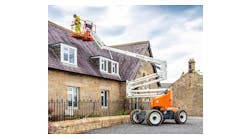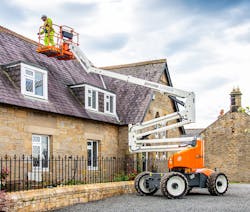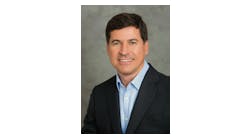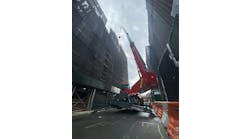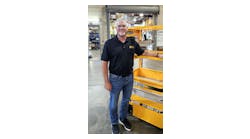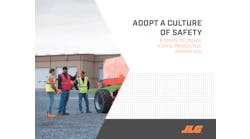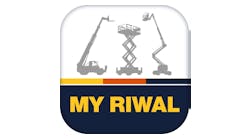Interview with Jeffery Eckhardt, vp of engineering, Xtreme and Snorkel: Full Control Capabilities
Jeffery Eckhardt, vice president of engineering, Xtreme Manufacturing & Snorkel, talks about higher capacity boom lift platforms, lithium technology, enhanced safety capabilities throughout the aerial industry, widespread adoption of secondary guarding systems, effective theft deterrents, range-extending gensets and more.
What do you see as some of the new trends in mobile elevating work platforms and telehandlers (not just with your company’s products). What are customers particularly looking for?
Eckhardt: The newer MEWP industry trends include compact/mini lifts, high-capacity boom platforms and crawler/spider lifts. Compact/mini lifts are being utilized in confined spaces during and post construction, to limit the amount of damage that can be caused by larger lifts when navigating the project to complete tasks. The trend for these machines also includes electric drive/electric steer, lithium technology, and no fold down rails. The electric drive/electric steer conversion assists with limiting the need for hydraulic usage in drive and steer. Less hydraulic functions reduce the exposure to potential hydraulic leaks. Furthermore, the rapid maturation of Lithium-ion technology is benefiting the MEWP industry with longer run times and less battery maintenance, compared to lead-acid batteries.
High-capacity boom lift platforms are provided to accommodate people, tools, and materials to complete tasks safer, faster, and more efficiently. The higher capacity boom platforms allow operators to bring additional personnel, tools and/or materials while performing elevated tasks; ultimately reducing job times while mitigating job site accidents.
The crawler/spider lift space is increasing as demand rises. The rise of demand is due to project needs such as floor loads, confined entry/exit spaces and structure design complexity. More specifically, this increase in demand within the construction industry includes the need to accommodate for flat glass products. Rising developments in the commercial sector can benefit from the efficiency provided by these types of lifts and is anticipated to augment market growth in the coming years.
What improvements are being made in the aerial industry in regard to safety, in your products and in the industry as a whole? Are there particular areas of safety you feel need to be addressed more, i.e., falls from height, electrocutions, entrapments, tools falling out of platforms, etc.?
In recent years, the aerial work platform (AWP) industry has taken significant strides in enhancing safety, both in terms of product innovation and overall industry practices. One of the most notable developments has been the widespread adoption of secondary guarding systems, with many manufacturers now offering these either as standard or optional features. Secondary guarding provides an additional layer of protection, particularly for operators working in environments where the risk of entrapment or collision with obstacles is high.
Snorkel was one of the pioneering companies in this area, having made secondary guarding a standard feature on all of their boom lifts as early as October 2015. This system is also available as a retrofit option for a wide range of machines, with compatibility dating back to models from the 1990s. The retrofit option is critical in ensuring older equipment can meet modern safety standards, which is especially important for companies operating mixed fleets.
Our approach to secondary guarding focuses on empowering the operator, the most essential safety system on any work platform. In the event that secondary guarding is triggered, we prioritize the operator's ability to assess the situation and make informed decisions about how to move the machine to a safe position. This strategy reinforces the operator's role in preventing accidents while also offering them full control of the situation.
However, in scenarios where the operator may be incapacitated or unable to respond, our system allows a ground spotter to take control of the machine remotely. With full control capabilities, the spotter can safely lower the platform to the ground, ensuring the operator's safety and preventing potential accidents.
Beyond secondary guarding, the industry is advancing in control system technology. Modern aerial work platforms are equipped with advanced control systems that not only monitor precise positioning of the lift but also provide crucial feedback to the operator. These systems can prevent dangerous situations by alerting operators to hazards such as tilting, overloading, sensor failures, or other operational risks. In the event of a sensor failure, many of these systems record the last known safe position, allowing operators to navigate with greater confidence and avoid exacerbating any dangerous conditions.
Another key area of concern across the industry is the issue of falls from height. While fall arrest systems and guardrails offer physical barriers, we’re seeing improvements in proactive technologies that monitor operator movements and the platform's stability. Innovations such as tilt sensors, stability monitors, and load management systems help prevent operators from overreaching or positioning the lift in an unsafe manner. These technologies ensure operators are protected even when working at extended heights or on uneven ground.
Moreover, the industry is also addressing the risks of tools falling from platforms, which can pose serious hazards to workers below. Innovations in tool tethering, platform meshes, and platform organization systems are being incorporated into machine designs to minimize the likelihood of dropped tools, further enhancing overall jobsite safety.
As manufacturers continue to innovate, I believe there are still areas that need further attention. Entrapments and electrocutions remain critical concerns, especially when working in confined or high-voltage areas. More sophisticated sensing technologies—such as radar-based proximity detectors, infrared barriers, and real-time visual recognition systems—could help reduce risks in these situations by detecting obstacles, overhead lines, or unsafe conditions before the operator is exposed to harm.
What are the main new developments in your company’s products?
At Snorkel, we’re focused on pushing the boundaries of what aerial work platforms can achieve, particularly in terms of expanding work envelopes and increasing load capacities. These improvements allow operators to access more challenging work areas and handle heavier loads, enhancing productivity across various applications. One of the key advancements driving these improvements is the development of advanced steering modes. By integrating improved sensor technology, we’ve been able to offer more precise control of the machine's movements, providing operators with enhanced maneuverability even in tight or complex environments. These sensors assist in real-time adjustments to the steering, enabling smooth operation in confined spaces, while maintaining the stability and safety that operators need. This focus on both increased capacity and refined movement control reflects our commitment to developing equipment that is not only more versatile but also safer and easier to operate.
We continually ask manufacturers and rental companies about electric and hybrid aerial machines, and we find demand and acceptance is increasing each year, along with improved charging infrastructure on jobsites. Do you agree with this? What are your expectations for this market in the foreseeable future, particularly in rental?
The demand and acceptance of electric and hybrid aerial work platforms have seen a substantial increase in recent years, and this trend is only expected to accelerate. The advancement and reduced costs of lithium-ion battery technology have played a significant role in driving the adoption of electric machines across the industry. These not only batteries offer longer runtimes but also improved energy efficiency, making them an attractive option for both manufacturers and rental companies.
A growing challenge on many jobsites is the issue of battery theft, particularly as electric machines become more prevalent. However, when it comes to lithium-ion batteries, the problem is somewhat mitigated by a few key factors. Unlike traditional lead-acid batteries, lithium batteries have minimal scrap value, making them far less attractive to thieves looking to sell stolen components. Additionally, modern lithium batteries are often designed with unique connectivity that ties them specifically to the equipment they power, rendering them useless for other applications without the proper integration. This lack of interchangeability, combined with the fact that lithium batteries require less maintenance, allows manufacturers to install them in bolted or locked compartments that are not easily accessible. These secure housings act as an effective theft deterrent, protecting valuable equipment from tampering and ensuring that the machines stay operational on the jobsite.
One of the key innovations in this space is the integration of range-extending gensets—often referred to as the hybrid option. This setup allows electric-powered machines to operate across multiple shifts before needing a recharge or refuel. The hybrid capability is particularly valuable as it provides a flexible solution for jobsites, allowing the machine to run on battery power when working indoors or in noise-sensitive and emission-restricted areas, while the genset can kick in when the equipment is moved outdoors or to areas where grid power may not be readily available.
In fact, many machines can function strictly as battery-powered units, only requiring charging when plugged into the grid. This highlights a critical point: charging infrastructure on jobsites must keep pace with the growing fleet of electric-powered machines. As the adoption of electric aerial platforms increases, ensuring that the electrical grid at jobsites can handle the demand for charging is essential. Jobsite planners and contractors need to be aware of the potential surge in energy requirements to avoid delays in operations due to inadequate charging facilities.
The aerial work platform market is uniquely positioned to benefit from this shift toward battery-powered equipment. Aerial lifts are frequently used indoors in environments such as factories, offices, convention centers, and retail spaces, where quiet operation and minimal emissions are not only beneficial but often a necessity. The ability to operate equipment in such settings without disrupting workers, patrons, or nearby communities makes electric platforms particularly valuable in urban and densely populated areas.
Furthermore, aerial lifts are often stationary for extended periods while operators work at height. During these times, traditional fuel-powered engines would continue to run idle, leading to unnecessary emissions and noise. Electric and hybrid systems, by contrast, can capitalize on zero-idle time, saving energy and improving the overall efficiency of operations. This capability significantly reduces not only fuel consumption but also the environmental footprint of the equipment.
Looking ahead, we expect to see further improvements in battery technology, resulting in longer runtimes, quicker charging capabilities, and overall reduced costs. The adoption of electric and hybrid machines in the rental market is expected to continue growing, particularly as contractors and operators become more accustomed to the technology and as the supporting infrastructure improves. For rental companies, offering electric and hybrid machines can also be a strategic advantage, as more customers demand sustainable and environmentally friendly options for their projects.
That said, while the demand for electric machines is rising, there are still challenges to address. One significant factor is ensuring that rental companies are prepared to maintain and service these machines, as electric platforms require a different maintenance approach compared to traditional internal combustion engine models.
Additionally, as fleets transition to electric and hybrid systems, there may be a need for further training and education for operators, rental staff, and mechanics to ensure proper handling and optimization of these new technologies.
In conclusion, electric and hybrid aerial work platforms are not just a trend—they represent the future of the industry. The combination of efficiency, sustainability, and versatility makes them a compelling choice for both indoor and outdoor applications. As battery technology continues to advance and charging infrastructure becomes more widespread, the market for electric and hybrid platforms is expected to expand rapidly, especially in the rental sector where flexibility and reliability are key to meeting customer demands.
